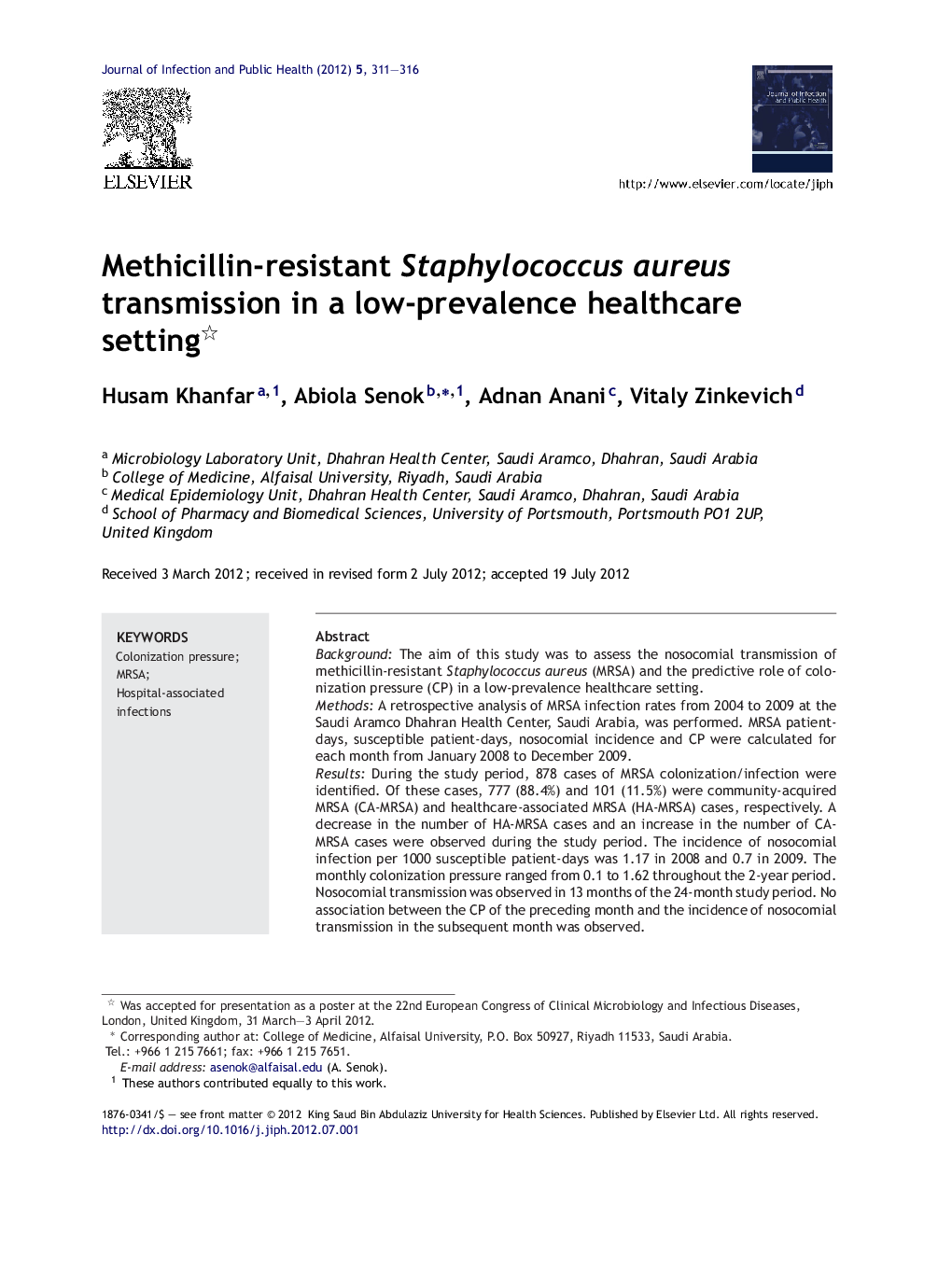| Article ID | Journal | Published Year | Pages | File Type |
|---|---|---|---|---|
| 3406114 | Journal of Infection and Public Health | 2012 | 6 Pages |
BackgroundThe aim of this study was to assess the nosocomial transmission of methicillin-resistant Staphylococcus aureus (MRSA) and the predictive role of colonization pressure (CP) in a low-prevalence healthcare setting.MethodsA retrospective analysis of MRSA infection rates from 2004 to 2009 at the Saudi Aramco Dhahran Health Center, Saudi Arabia, was performed. MRSA patient-days, susceptible patient-days, nosocomial incidence and CP were calculated for each month from January 2008 to December 2009.ResultsDuring the study period, 878 cases of MRSA colonization/infection were identified. Of these cases, 777 (88.4%) and 101 (11.5%) were community-acquired MRSA (CA-MRSA) and healthcare-associated MRSA (HA-MRSA) cases, respectively. A decrease in the number of HA-MRSA cases and an increase in the number of CA-MRSA cases were observed during the study period. The incidence of nosocomial infection per 1000 susceptible patient-days was 1.17 in 2008 and 0.7 in 2009. The monthly colonization pressure ranged from 0.1 to 1.62 throughout the 2-year period. Nosocomial transmission was observed in 13 months of the 24-month study period. No association between the CP of the preceding month and the incidence of nosocomial transmission in the subsequent month was observed.ConclusionIn a setting of low MRSA prevalence, CP does not appear to be a useful predictor of nosocomial transmission or incidence.
